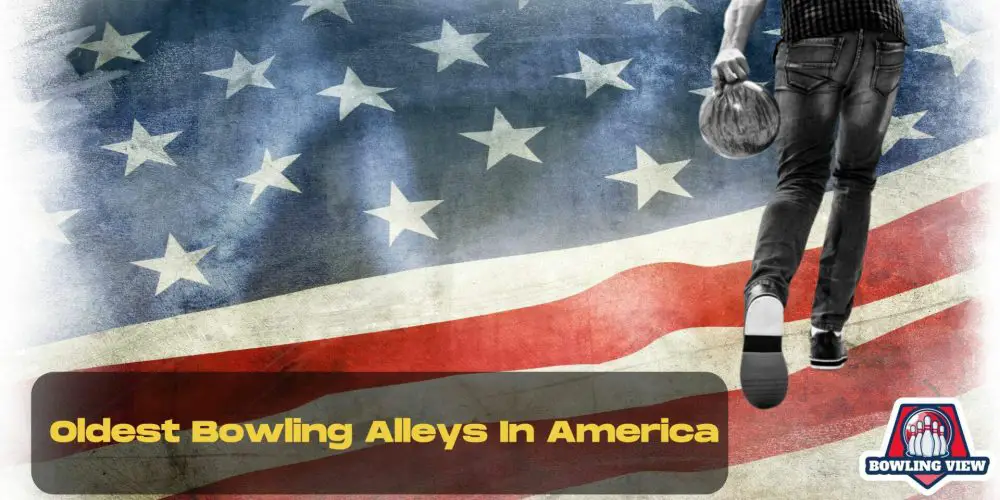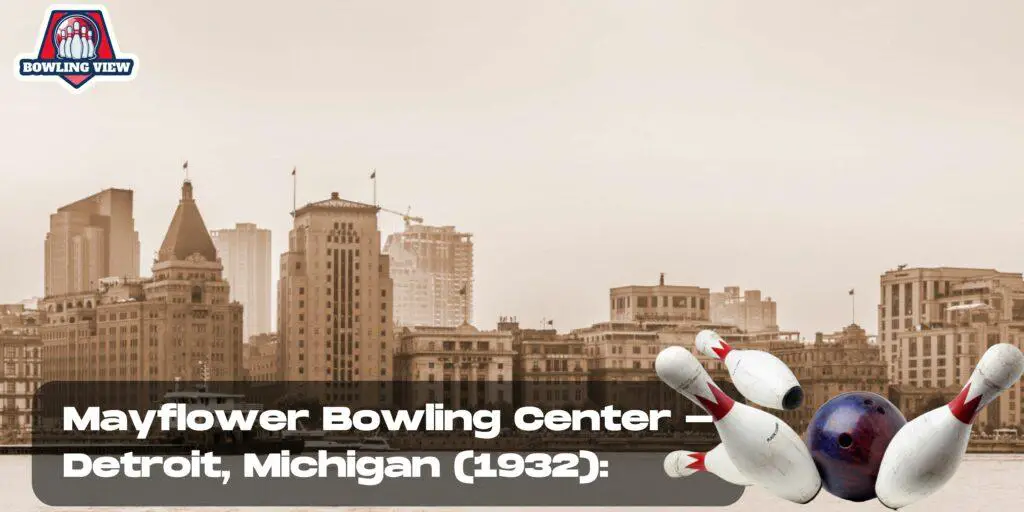The rich history of bowling in America dates back centuries, with the advent of some of the country’s oldest and most iconic bowling alleys. These nostalgic establishments have stood the test of time and continue to offer enthusiasts a chance to experience a piece of Americana.
From original wooden lanes to vintage scoring systems, these bowling alleys transport visitors to an era gone by while celebrating a beloved pastime.
Among the many historic bowling alleys across the United States, a handful stand out for their remarkable longevity and unique characteristics.
These time-honored institutions hold stories and memories that span generations, with some even boasting origins in the late 19th century. With a focus on preserving tradition, these lanes have not only withstood the test of time but have also played an integral role in the development of the sport in America.
Frequenting the country’s oldest bowling alleys allows us to rediscover the roots of a game deeply ingrained in the fabric of American culture.
This article will explore some of these remarkable establishments, delving into their storied pasts and honoring the legacy they continue to uphold; a testament to the enduring appeal of bowling as both a sport and a cherished social activity.
History of Bowling in America
Early Beginnings
The history of bowling in America can be traced back to the early 17th century when English, Dutch, and German settlers brought their versions of the game to the New World. Bowling was played in various forms, with the most common being nine-pin bowling, which is still played in some parts of the country today.
In the mid-19th century, the sport began to gain popularity as it evolved into the tenpin bowling we know today. The first documented indoor bowling alley was Knickerbocker Alleys, which opened in New York City in 1840. As the sport grew, many more alleys were built across the country, often serving as gathering places for social events.
Prohibition Era
During the Prohibition Era in the 1920s and early 1930s, the bowling industry experienced rapid growth. With alcohol consumption illegal, many bars and saloons transformed into bowling alleys to remain in business. This period also saw the establishment of bowling organizations and tournaments, helping to drive the sport to new heights.
Throughout the decades that followed, bowling continued to evolve and adapt to the changing social and cultural landscape of America. The sport maintained its popularity, even as other forms of entertainment, such as television and movies, became increasingly popular.
Today, America is home to many historic bowling alleys, some dating back over a century, each with its own unique story and place in the history of bowling.
In this section, the focus was on the history of bowling in America, covering topics such as the early beginnings, the Prohibition Era, and the sport’s evolution over time. By examining these aspects, a greater understanding and appreciation for the historical context of America’s oldest bowling alleys can be gained.
Oldest Bowling Alleys
Holler House
Established in 1908, Holler House is located in Milwaukee, Wisconsin. This historic bowling alley is known as one of the oldest in America and boasts two well-preserved lanes. This long-standing establishment has maintained much of its original charm, making it a favorite among history enthusiasts and bowling aficionados alike.
Los Angeles’ Highland Park Bowl
Highland Park Bowl, originally built in 1927, is the oldest bowling alley in Los Angeles. After undergoing a revitalization in 2016, the once-dilapidated space has been transformed into a vibrant destination with a speakeasy-style bar and ambiance. The restoration uncovered several hidden features, adding to the allure of this historic landmark.
Lower Columbia Bowl
Located in Astoria, Oregon, Lower Columbia Bowl has been in operation since 1933. This classic bowling alley features 8 lanes and a family-friendly atmosphere. It is a popular establishment in the Northwestern United States.
Garden Bowl
Detroit, Michigan is home to the Garden Bowl, established in 1913. More than a century old, the Garden Bowl has a rich history within Detroit’s entertainment scene.
The alley continues to attract bowlers with its vintage architecture and vibrant urban setting.
Solvay Recreation Alleys
Nestled in Solvay, New York, Solvay Recreation Alleys is another noteworthy, long-standing bowling alley. Opening in 1936, this venue remains a staple within the Syracuse-area community and attracts a dedicated following of bowlers.
Mahall’s Bowling Center
Mahall’s Bowling Center, located in Lakewood, Ohio, was founded in 1924. Despite facing numerous challenges throughout the years, it has survived as a beloved local landmark known for its eclectic mix of bowling, live music, and other special events.
Bryant Lake Bowl and Theater
Established in 1936 in Minneapolis, Minnesota, Bryant Lake Bowl and Theater is more than just a bowling alley. The multipurpose venue combines bowling with a theater offering independent films and live performances. The diverse range of activities available has helped solidify Bryant Lake Bowl and Theater as a staple in the local entertainment scene.
Atomic Bowl Duckpin
Situated in Indianapolis, Indiana, Atomic Bowl Duckpin was founded in the 1930s. This unique bowling alley offers “duckpin” bowling, a variation that utilizes smaller balls and pins. The historic venue’s distinctiveness and enduring charm make it a popular destination for bowlers seeking a one-of-a-kind experience.
These eight historic bowling alleys represent some of the oldest and most unique venues in America. Their continued operations and devoted patronage reflect the timelessness and nostalgic appeal of the sport.
Candlepin Bowling
Candlepin bowling is a variation of the traditional 10-pin bowling game, predominantly found in the northeastern United States. Its unique features include the use of thinner pins, smaller bowling balls, and the most distinct aspect – players are allowed three attempts per frame, in contrast to the two in 10-pin bowling.
Roseland Cottage, Shohola, Pennsylvania
Roseland Cottage is a historic location in Shohola, Pennsylvania that houses one of the oldest candlepin bowling alleys in America. This well-preserved alley has been providing entertainment and a glimpse into the origins of candlepin bowling for generations.
The alley at Roseland Cottage showcases the vintage equipment that once defined the sport. Players can truly experience the roots of candlepin bowling, allowing them to appreciate the evolution of the game throughout the years.
Moreover, Roseland Cottage itself is an architectural marvel, adding to the overall ambiance of the location. Its picturesque surroundings of lush gardens and the quaint town of Shohola make it a perfect destination for bowling enthusiasts and travelers alike.
Bowling Leagues and Socializing
League Play
League play has been a staple of American bowling alleys for decades, providing bowling enthusiasts with an opportunity to socialize and compete. Many of the oldest bowling alleys in America continue to host leagues, maintaining a sense of tradition and camaraderie among players.
In a typical bowling league, teams of individuals bowl against one another every week, accumulating points throughout the season. These teams often enjoy one another’s company while sporting their stylish bowling shoes and sipping on refreshing cocktails. League play is a perfect blend of friendly competition and social interaction.
Vintage Lanes
While new bowling alleys may have the latest equipment, vintage lanes found in some of the oldest bowling alleys have a charm of their own. These classic venues not only offer an authentic experience but also serve as a reminder of the history and evolution of the sport. Many avid bowlers appreciate the unique atmosphere created by the vintage lanes, which often boast nostalgic designs and time-tested pin-setting technology. Here, good times and lasting memories are created with each roll of the ball.
The Spare Room
One of the most famous establishments among the oldest bowling alleys in America is The Spare Room. Located in Los Angeles, this iconic venue offers a mix of upscale entertainment and an intimate atmosphere.
Besides its two vintage bowling lanes, The Spare Room also features a stylish cocktail lounge where patrons can enjoy expertly crafted cocktails while they mingle with friends and fellow bowlers.
Thanks to the lounge area and unique ambiance, The Spare Room has become a popular destination for league play and socializing, further proving that bowling alleys are about more than just knocking down pins.
Preservation of Historic Bowling Alleys
The National Trust for Historic Preservation plays a significant role in preserving and maintaining historic bowling alleys across America. They understand the cultural significance and nostalgic value of these establishments and strive to ensure their continued existence.
Many of the oldest certified bowling lanes have a rich history and have witnessed several generations of bowlers. They serve not only as recreational venues but also as important landmarks that remind communities of their past.
The preservation of these historic bowling alleys has become increasingly crucial as newer establishments with modern amenities may overshadow these old treasures.
One of the challenges in preserving historic bowling alleys is the need to maintain their original features while ensuring the safety and functionality of the premises. Upgrading mechanical systems, such as the pinsetters and ball returners, may be necessary to meet current standards.
The National Trust for Historic Preservation collaborates with local communities, businesses, and other organizations to raise awareness and secure funding to help preserve the historic bowling alleys. They may provide grants and technical assistance to assist in renovation efforts while maintaining the integrity of the original architecture.
By preserving these historic bowling alleys, we not only celebrate Americans’ love for the sport but also ensure that future generations can connect with their heritage and develop a deep appreciation for the art and history of bowling.
Visual History
Pin Boys
In the early days of America’s oldest bowling alleys, pin boys played a crucial role. They were responsible for manually resetting the pins and returning the balls to the bowlers. These young workers were commonly found in bowling alleys with wooden lanes, providing a more personal touch to the game.
Pin boys had a physically demanding job, yet their presence added a unique human interaction between bowlers and staff. As technology progressed, automatic pin setters eventually replaced the pin boys, but their contributions to the sport’s history are still remembered today.
Photos
Historical photos give a glimpse into the past of the oldest bowling alleys in America. These images capture the essence of how the game was played and enjoyed. From wooden lanes to bowlers dressed in traditional attire, these photos depict a simpler time when bowling was gaining popularity.
From the 1800s, some alleys allowed patrons to enjoy whiskey while they bowled, creating a social atmosphere that attracted people from various walks of life. The vintage photos reveal how these bowling alleys played an essential role in the social lives of people, serving as a place for friendly competition and camaraderie.
Additionally, these photos showcase the transition in bowling technology over the years, complementing the stories of bowling’s past. The visual history of America’s oldest bowling alleys reminds us of the sport’s humble beginnings and the important role it has played in shaping recreational culture.
Another interesting read> 10 Famous Celebrities Who Love Bowling
conclusion
From the pin boys of wooden lanes to modern automatic setters, America’s oldest bowling alleys have a rich and storied history. The vintage photos that capture these moments in time remind us how far the sport has come over the years.
From its origins as a social gathering spot for friends and family to its current status as an international pastime, bowling is here to stay.
Whether you’re looking for some friendly competition or just want to relax with your favorite beverage while enjoying a game of frames, America’s old-school bowling alleys are sure to provide plenty of entertainment both on and off the lanes!
Related Articles:



